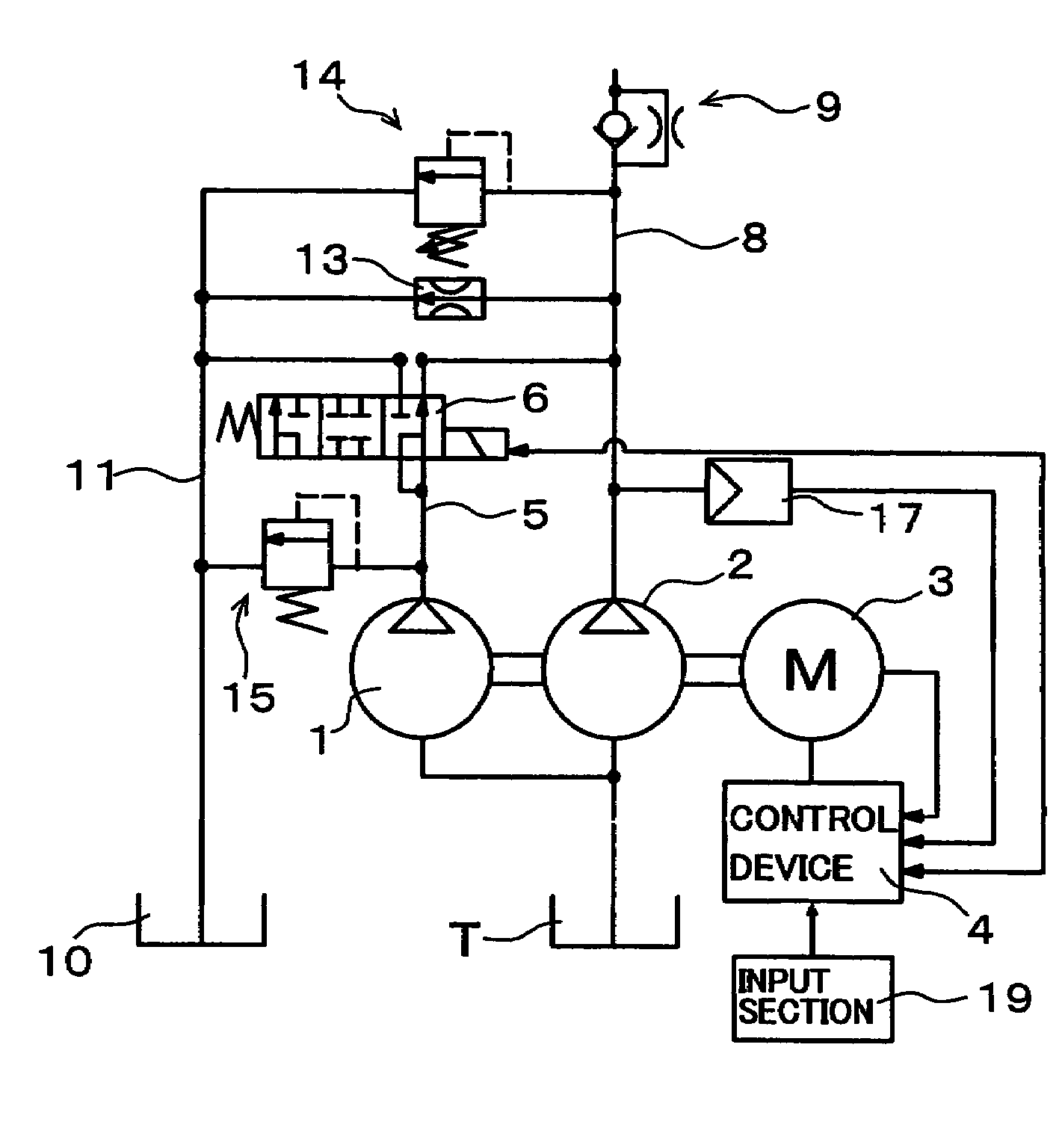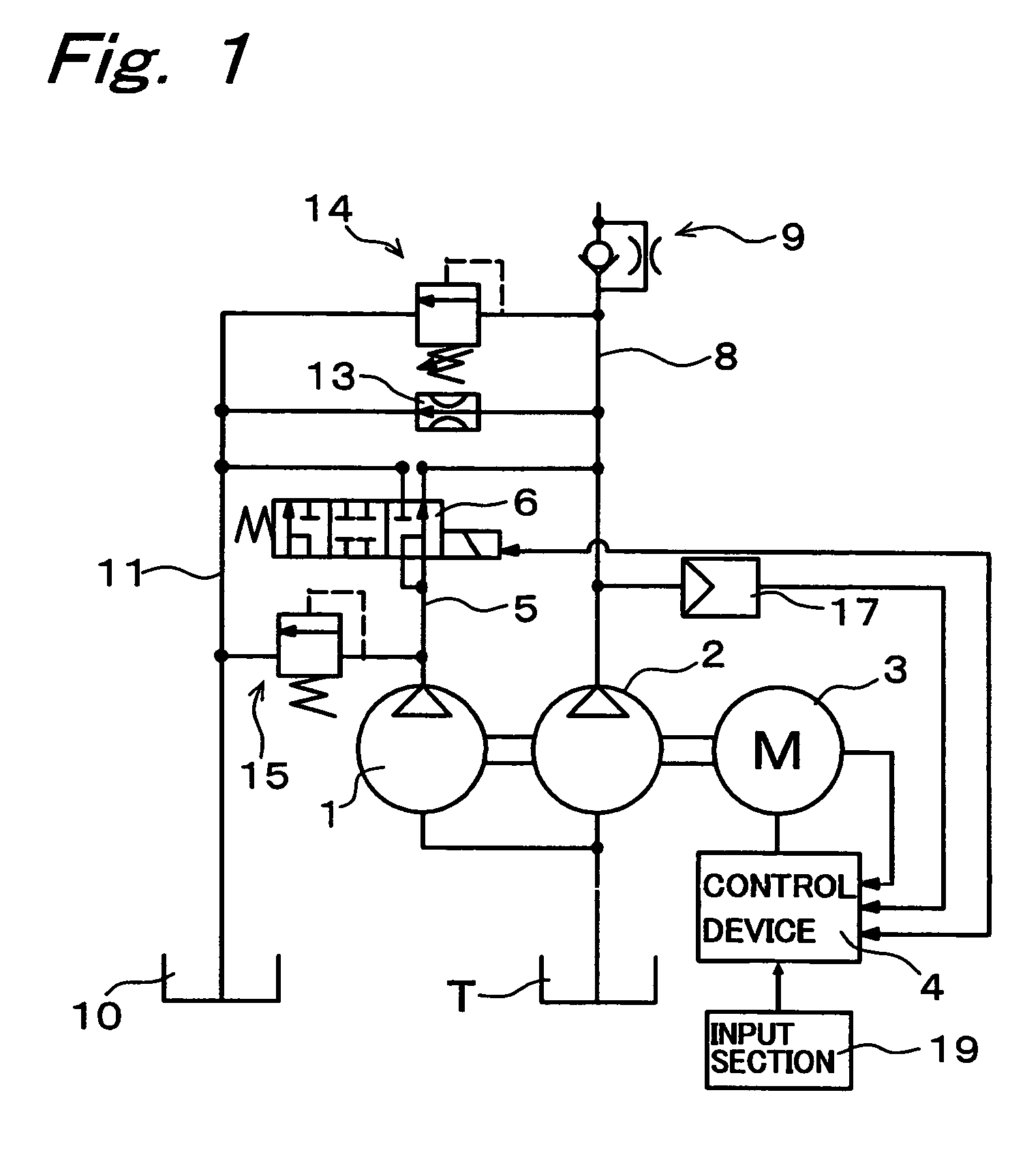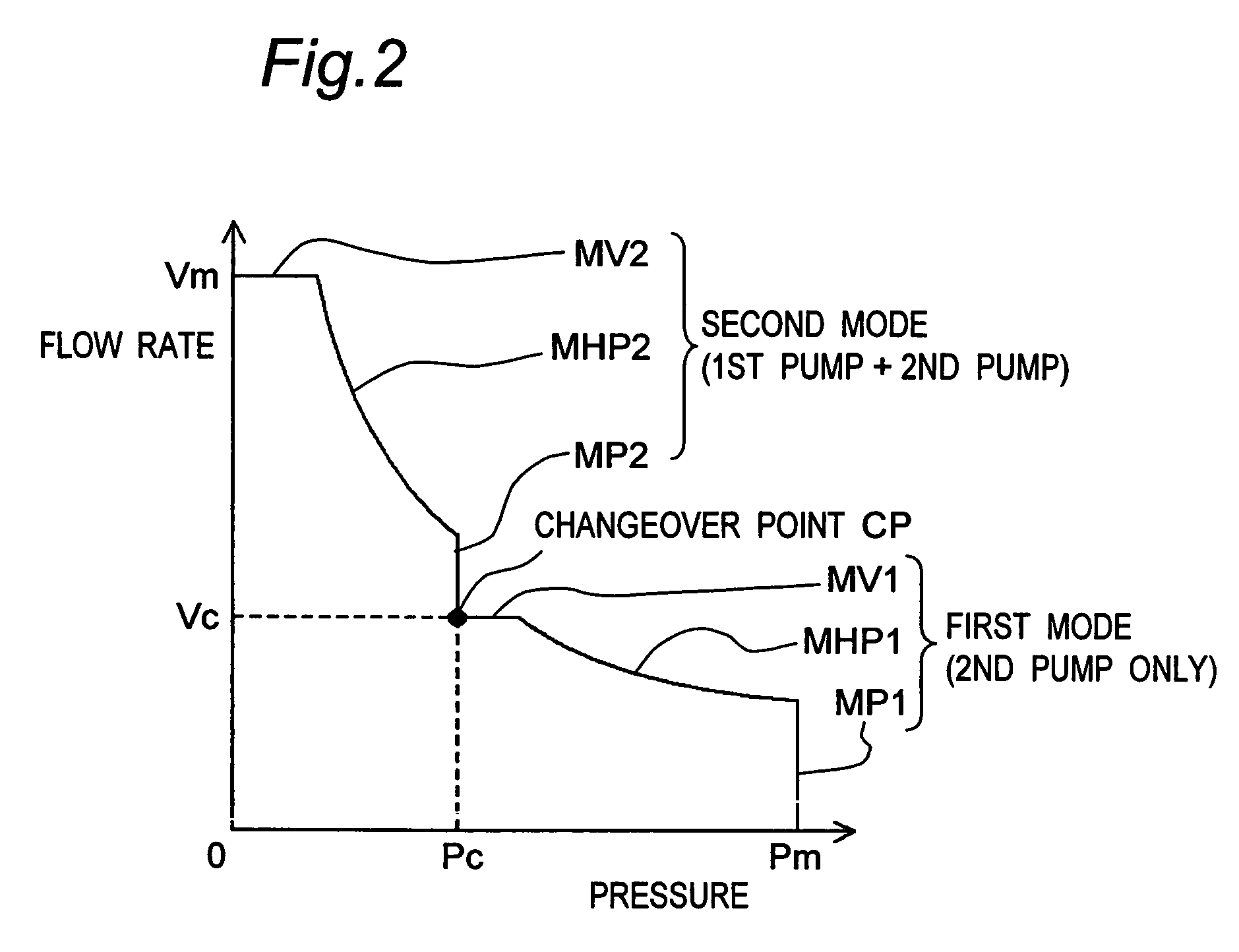Pump unit with multiple operation modes
a pump unit and operation mode technology, applied in the field of pump units, can solve the problems of increased cost, increased discharge pressure, excessive noise and vibration of the pump unit, etc., and achieve the effects of reducing noise and vibration, high discharge pressure, and high flow rate operations
- Summary
- Abstract
- Description
- Claims
- Application Information
AI Technical Summary
Benefits of technology
Problems solved by technology
Method used
Image
Examples
Embodiment Construction
[0032]Hereinbelow, the present invention is described in detail by embodiments thereof illustrated in the accompanying drawings.
[0033]FIG. 1 is a view showing a pump unit of an embodiment of the present invention. This pump unit is a pump unit that feeds a working fluid of a tank T to an unshown actuator such as hydraulic cylinder. This pump unit has a first pump 1 as a first fixed-capacity type pump of large capacity, and a second pump 2 as a second fixed-capacity type pump of small capacity directly connected to the first pump 1. The first pump 1 is a gear pump of 5.5 cc / rev., and the second pump 2 is a gear pump of 3.5 cc / rev. These first pump 1 and second pump 2 are connected to a variable-speed motor 3, and this variable-speed motor 3 is electrically connected to a control device 4. An outlet port of the first pump 1 is connected to a first discharge line 5, and an outlet port of the second pump 2 is connected to a second discharge line 8. The first discharge line 5 is connecte...
PUM
 Login to View More
Login to View More Abstract
Description
Claims
Application Information
 Login to View More
Login to View More - R&D
- Intellectual Property
- Life Sciences
- Materials
- Tech Scout
- Unparalleled Data Quality
- Higher Quality Content
- 60% Fewer Hallucinations
Browse by: Latest US Patents, China's latest patents, Technical Efficacy Thesaurus, Application Domain, Technology Topic, Popular Technical Reports.
© 2025 PatSnap. All rights reserved.Legal|Privacy policy|Modern Slavery Act Transparency Statement|Sitemap|About US| Contact US: help@patsnap.com



